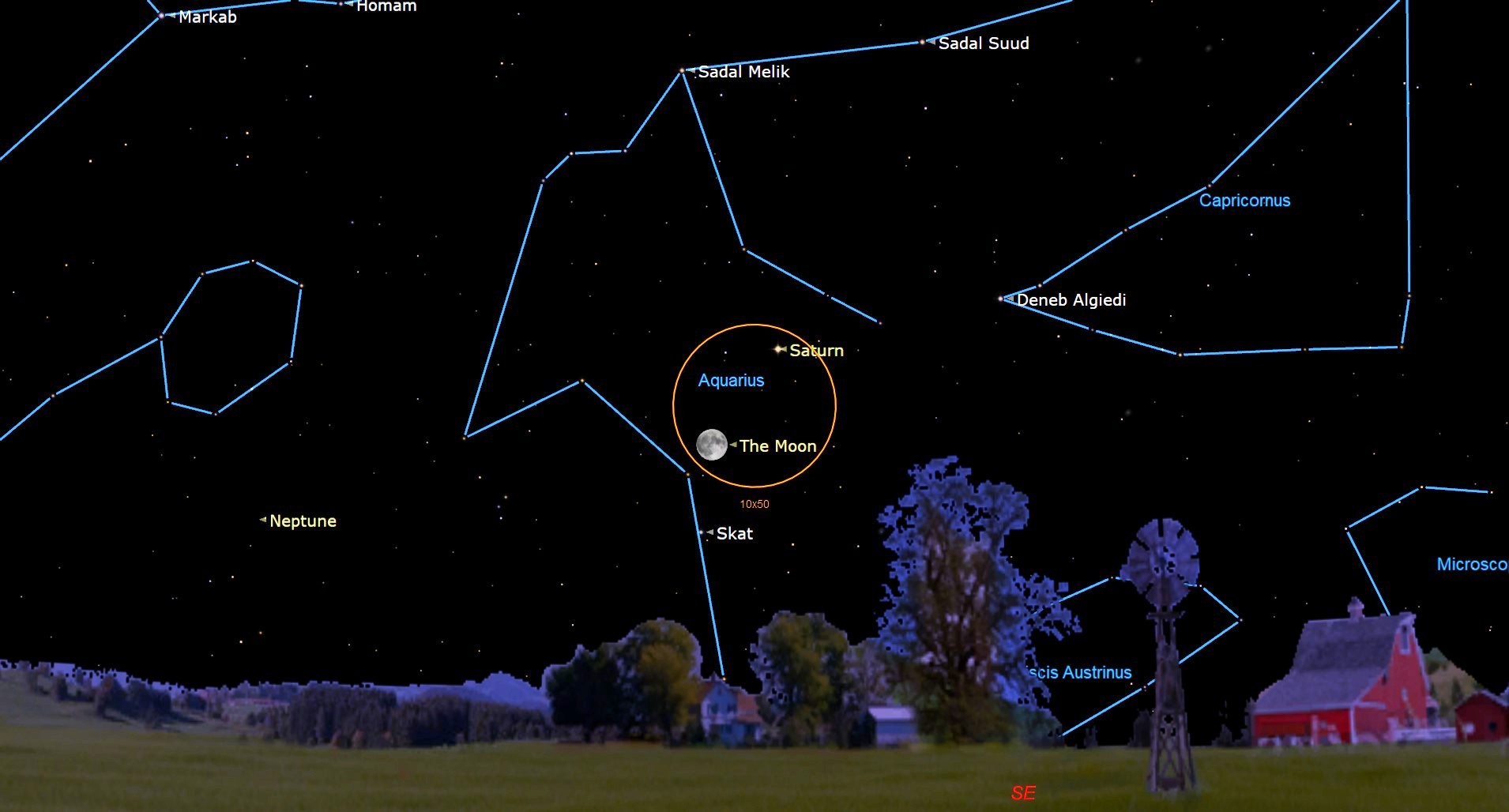See Saturn snuggle up to the Super Blue Moon in the night sky tonight
Unfortunately, the light of the full moon could make spotting Saturn difficult.

Saturn will meet up the the Super Blue Moon tonight (Aug. 30), with the full moon acting as a perfect guide to spotting the gas giant planet.
The Super Blue Moon, the second full moon of this month, will pass within around two degrees of Saturn - just about a finger's width at arm's length. At around the same time, the two celestial bodies will share an arrangement astronomers call a conjunction, meaning they have the same right ascension, or longitude, in the sky. Both the moon and Saturn will be in the constellation of Aquarius during the close approach and the conjunction.
According to In the Sky, from New York City, the close approach of the moon and Saturn will be visible just after sunset at around 7:25 p.m EDT (2325 GMT) on Wednesday as it rises from the eastern horizon. The moon and the gas giant will then set at around 6:07 a.m. EDT (1007 GMT), just before sunrise, on Thursday, Aug. 31. During the close approach of the moon to Saturn, the two will be too widely separated to be viewed together with the narrow field of view of a telescope but will be tight enough to be viewed together with binoculars.
Related: Night sky, August 2023: What you can see tonight [maps]

Want to see the Super Blue Moon up close? We recommend the Celestron Astro Fi 102 as the top pick in our best beginner's telescope guide.
During the conjunction, the moon will have a magnitude of -12.8, with the minus prefix indicating a particularly bright object over Earth, while Saturn will be dimmer having a magnitude of 0.4. The moon will dominate Saturn in terms of apparent size in the night sky, but of course, this is an effect of the moon's proximity to Earth in comparison to Saturn, which is the sixth planet from the sun (Earth is the third).
In terms of actual size, the moon is much smaller than Saturn, meaning if the two celestial bodies were at equal distances from Earth, the gas giant would easily rule the night sky over Earth instead of the moon.
The moon has a diameter of around 2,200 miles (3,500 kilometers), about a quarter of the diameter of our planet, while Saturn has a diameter of around 72,300 miles (116,500 kilometers), which is around 9.5 times wider than Earth. Thus, it would take at least 34 bodies the size of our moons to fully loop around the equator of Saturn.
Breaking space news, the latest updates on rocket launches, skywatching events and more!
The sheer scale of the gas giant becomes even more intimidating when considering its volume. Earth would fit around 50 moons within the space it fills, while it would take around 760 Earths to fill the volume of Saturn. That means it would take around 38,000 moons to occupy the space taken up by the gas giant, which is the second largest planet in the solar system after Jupiter.
If you are hoping to catch a look at the moon in conjunction with Saturn, our guides to the best telescopes and best binoculars are a great place to start.
If you’re looking to snap photos of these celestial objects or the night sky in general, check out our guide on how to photograph the moon or how to photograph planets, as well as our best cameras for astrophotography and best lenses for astrophotography.
Editor's Note: If you snap an image of the moon with Saturn and would like to share it with Space.com’s readers, send your photo(s), comments, and your name and location to spacephotos@space.com.

Robert Lea is a science journalist in the U.K. whose articles have been published in Physics World, New Scientist, Astronomy Magazine, All About Space, Newsweek and ZME Science. He also writes about science communication for Elsevier and the European Journal of Physics. Rob holds a bachelor of science degree in physics and astronomy from the U.K.’s Open University. Follow him on Twitter @sciencef1rst.

